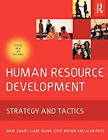|
The Trainers HandbookChapter 5 - Evaluating Your EffectivenessDeveloping and Evaluating Project Sessions
Project sessions could be based on a real-life situation with which you are familiar or the worst situation you can imagine. A third way is to simply provide routine problems the trainees would handle every day. But whatever project you use, make your sessions fit the group. If they are not training in crisis management, dont give them a crisis to manage. If they are learning routines, give them routines to perform. Have correct answers ready if there is a chance there may be some doubt about the outcome. Use the material youve taught to verify their answers. (This repetition also locks in learning.) Assign a project that can be completed in the time you allow. The projects should be challenging (nothing is more boring than an easy project), but not unreasonably so. Allow seminar time for at least part of the project to be completed. Homework is good, but practice time at the learning site (with the trainer available) is better. Projects can be either individual or group; in fact, give them both. An individual project ensures that everyone participates and gets a chance for feedback and evaluation. A group project builds teamwork, and reflects the more realistic working environment. Group activities set up the personal interactions that all of us must cope with every day. Evaluate each project individually. This is usually done most easily in the evening after the days training session is over. Give each individual attention and indicate that you have seen the work by making marginal notes, corrections, and responses. Give both positive and negative feedback. If you allow only the negative, you will discourage the learners. If you give only the positive, they will not correct bad habits. I prefer to begin with the positive specifics of what I like about their work and then address the problem areas. (See Figure 5-1.) Figure 5-1. Sample feedback from one of my training the trainer sessions. [Trainee project] Objectives Affective At the end of the one-week course, the trainee will be able to present a cost analysis based on actual test results.
Cognitive After one day, the trainee will be able to describe gas-metal arc welding.
[My comments] Both of these sound cognitive, Lydia. Both are excellent, as such, but the one labeled affective describes a skill performance, not an attitude. To be affective it would have to be written more like be able to describe the need for cost analysis or present a cost analysis enthusiastically or confidently prepare and present a cost analysis. Remember also that you are not grading! Make no comparisons. You are providing feedback on how each trainee or group has done. Set in your mind the specific things you will look for, and remain consistent. Usually these things relate directly back to your objectives, which will help you target your criticism. Dont hesitate to correct the work if it appears they dont understand, but be wary of doing it for them. If you feel they should be able to respond, challenge them with your critique. Make them rethink their work and correct the errors. After all, they will be expected to do that in their jobs. Discuss the projects with the whole group. Explain what you were looking for and show examples of those who did it correctly (use different people each time if possible). Select one or two that werent up to par and ask the group to explain how they could have been done better (again, not always the same people). This is not as hard on them as it may seem. It provides them with shared constructive feedback, helps to create a climate that allows for errors (see Chapter 1), and reenforces a strong leadership message (see Chapter 3).
> Case Histories and Practice Sessions Excerpts from Chapter 5, The Trainer's Handbook
© 1998, 1993, 1987 AMACOM, a division of American Management Association, New York. All rights reserved. Published by AMACOM Books http://www.amacombooks.org Division of American Management Association 1601 Broadway, New York, NY 10019 Customer Service: 1-800-262-9699 More learning articles: |
|
|
|
|
|
|
|
|
|
|
|
| Copyright © 2000-2006 Alan Price and BestBooks.biz contributors. All rights reserved. |


